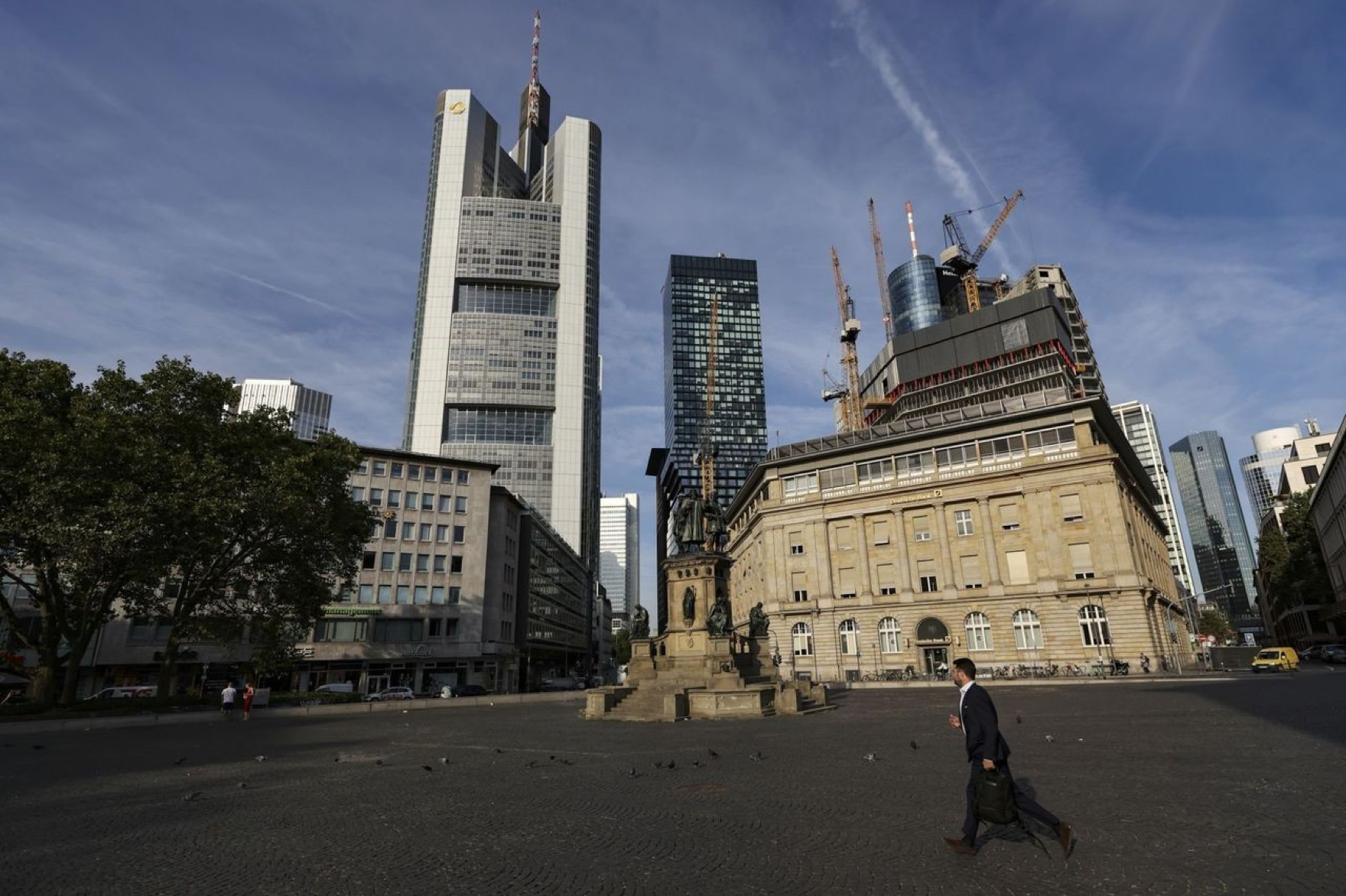Business surveys show soaring prices in West and fallout from Russia’s attack on Ukraine are infecting global economy
The global economy is sputtering and financial markets are flashing red, reflecting a sense on Wall Street that a sharper slowdown in worldwide economic activity is likely inevitable.
The culprits are surging inflation, a robust central-bank response, anxious investors and the impact of Russia’s aggression in Ukraine. The U.S. economy has largely escaped the worst of these ills, but a rising dollar is punishing the rest of the world at a time when price increases in many places are already outpacing incomes.
Signs of strain are widespread. Economic activity in Europe declined sharply in September, data showed Friday, raising the risk of recession as governments grapple with war-related disruptions. In the U.K., the pound tumbled to its lowest level since 1985 after the government proposed tax cuts in a bid to restart growth, intensifying inflation concerns. The Japanese yen on Friday resumed its decline against the dollar, just a day after the country intervened to boost its value for the first time since 1998.
Around the world, trade volumes are sputtering and inflation is crushing household and business confidence. China’s housing market is cracking, while Europe’s energy crisis is hammering factory output. The market’s disavowal of the U.K. tax-cut plan highlights the narrow options governments face as they try to rebalance in the face of soft growth and high inflation.
Central banks led by the Federal Reserve, just two years after dispensing massive stimulus, are prioritizing the fight against inflation, increasing interest rates at a pace not seen in decades. The result is a pronounced weakening in economic activity in many regions, amplified by market volatility that in some cases is returning to levels last seen in the financial crisis.
On Friday, the Dow industrials dropped below 30000, setting a new 2022 low and taking the major stock indexes to their fourth weekly decline of 3% or more in five weeks. U.S. crude futures fell 6% to their first close below $80 a barrel since Jan. 11. Government-bond yields hit their highest level in more than a decade in both the U.S. and the U.K.
“It’s a bit of an experiment, how fast and hard you can [raise interest rates] without destroying the real economy,” said Jens Magnusson, chief economist at SEB, a Sweden-based bank.
The signals that the end of an unusual economic cycle is at hand were being received loud and clear by bankers and economists. Goldman Sachs Group Inc. this week cut its 2022 year-end S&P 500 target by 16% to 3600. The index traded Friday at 3663.
Rates have “shifted dramatically,” Goldman’s David Kostin said. As a result, the outlook for markets is “unusually murky.”
Bank of America on Friday said it expects U.S. real gross domestic product to fall 1% in the four quarters ending in the last quarter of 2023, and for the U.S. unemployment rate to rise to 5.6% in December 2023.
Those forecasts underscore a central riddle of this cycle: how bad will the economic news get, after record stimulus helped avert economic disaster during Covid-19?
For now, some supply bottlenecks are easing and unemployment remains low across advanced economies. Households in these countries have dipped into savings amassed during the pandemic, with their spending increasing by an annual rate of 2.4% in the six months through June, according to analysts at JPMorgan Chase & Co. Global employment also rose at more than twice its prepandemic pace during the period, the analysts said.
The U.S. so far is weathering high inflation, slowing economic output and the impact of the Ukraine war better than some other parts of the world. Consumer spending and job growth remain robust and some manufacturers are shifting production from overseas, boosting investment.
Contracting U.S. business activity moderated in September, according to surveys of purchasing managers by data firm S&P Global. Its U.S. composite purchasing managers index—which measures activity in both the manufacturing and services sectors—was 49.3 in September, an improvement on August’s 44.6 reading. A reading below 50 indicates a contraction; a reading above that level indicates growth.
Cooling U.S. inflation will likely require somewhat higher unemployment and a sustained period of lower growth, Fed Chairman Jerome Powell said Wednesday. “We will keep at it until we are confident the job is done,” Mr. Powell said.
SHARE YOUR THOUGHTS
What’s your outlook on the global economy? Join the conversation below.
To comment, you’ll need to be on WSJ.com
S till, the housing market, often a leading indicator of economic weakness, is softening as mortgage rates soar. Fed officials on Wednesday lowered their median expectations for economic growth from 1.7% to 0.2% this year.
In the eurozone, retail sales declined in recent weeks as consumer sentiment hit the lowest level since records began in 1985. The region’s industrial output shrank by 2.4% in July from a year earlier as runaway energy costs strangled manufacturers. Deutsche Bank reckons the region’s economy could shrink by 2.2% next year, led by a 3.5% contraction in Germany.
Germany’s economy, the EU’s largest, is deteriorating at a rate not seen outside of the pandemic since the 2008 global financial crisis, said Chris Williamson, chief business economist at data firm S&P Global Market Intelligence. The pullback in economic activity in the country, which is highly reliant on manufacturing and one of the most exposed in Europe to the gas crisis, was particularly dramatic, S&P Global said.
“A eurozone recession is on the cards as companies report worsening business conditions and intensifying price pressures linked to soaring energy costs,” said Mr. Williamson.
Friday’s surveys showed a deepening decline in German business activity in September, led by the service sector, which has seen demand weaken rapidly as customers pull back on spending due to tightening budgets and heightened uncertainty about the outlook.
More than half of German retailers see their economic existence threatened by energy costs, according to a survey this week by the German Retail Association, a trade group. In Germany’s large auto sector, one in 10 companies have cut production because of high energy costs and another third are considering doing so, according to a survey this month by the German Association of the Automotive Industry. Nearly a quarter want to shift investments abroad.
“The situation, especially for medium-sized companies in the automotive industry, is becoming increasingly dramatic,” said Hildegard Müller, the association’s president.
Kion Group AG, a German forklift manufacturer, warned this month that incoming orders would be significantly below last year’s level in the three months through September, and predicted a loss of between €100 million and €140 million, equivalent to $98 million to $138 million.
In the U.K., retailer John Lewis & Partners this month reported a loss of £99 million, or about $111 million, for the first half of its trading year, and warned that customers are cutting back on the amount they spend.
Still, analysts are increasingly optimistic that the region will have enough gas for the winter, provided the weather isn’t too cold. The region’s governments have spent over €500 billion to support households and businesses through the energy crisis, according to calculations by Bruegel, a Brussels think tank.
Adding to the mystery of what comes next in Europe: the increasingly dangerous geopolitics of the moment. Russian President Vladimir Putin this week threatened nuclear strikes and ordered reservists to mobilize after his troops suffered stinging setbacks in Ukraine, suggesting Europe’s most significant conflict since World War II could either drag on or escalate.
Across Asia, export growth is weakening in the region’s major trading economies, a sign of tumbling demand for electronics as Western appetite for consumer goods fades.
“There really are signs now that things are starting to turn,” said Alex Holmes, senior Asia economist at Oxford Economics in Singapore.
South Korea, a bellwether of global trade, this week reported an 8.7% annual decline in exports during the first 20 days of September, led by cars and telecommunications equipment. Annual growth in semiconductor exports recovered after falling in August, data showed, but remains well below the gains seen earlier in the year.
Samsung Electronics Co., the world’s largest chip maker by revenue, said this month that it expected a sharp downturn in chip sales to extend into 2023. The semiconductor industry has been hit by a slump in sales of personal computers, smartphones and data servers worldwide.
“The second half of this year looks bad, and as of now, next year doesn’t really seem to show a clear momentum for much improvement,” Kyung Kye-hyun, who heads Samsung’s semiconductors unit and serves as the company’s co-CEO, said earlier this month.
Taiwan logged the slowest export growth in more than two years in August and China also reported crumbling growth in overseas sales last month, compounding anxieties over an economy already beset by a real-estate slump and Beijing’s zero-tolerance Covid-19 policy.
“Compared to the previous year, we have received fewer orders in the second half of this year,” said Nina Lin, sales manager of Tombo Toys Co., a Guangdong-based toy maker that mainly exports to the U.S., Eastern Europe and South America.
Chinese export growth in August slowed to an annual 7.1%, compared with 18% growth a month earlier. Exports to the European Union grew by an annual 11.1% in August, roughly half the rate in July, while shipments to the U.S. contracted by an annual 3.8%, data from China’s customs authority showed.
Like their counterparts in the U.S. and Europe, most central banks in Asia are raising interest rates. Central banks in the Philippines, Taiwan and Indonesia raised borrowing costs on Thursday, citing inflationary pressures.
The big exceptions are China and Japan, the world’s number two and three economies, which are less pressured by inflation and battling soft growth. The Bank of Japan held its policy settings steady Thursday, signaling it doesn’t think Japan is climbing out of the deflationary trap it has been mired in for years.
Recent data showed China’s slowdown moderated in August, benefiting from infrastructure investment that offset feeble consumer spending and a further decline in house prices. Covid-19 flare-ups in cities including Beijing and Shenzhen haven’t led to sustained lockdowns, though a handful of smaller cities are under tight restrictions.
Economists at Goldman this week cut their forecast for Chinese growth next year, to 4.5% from 5.3% previously, saying they expect China won’t significantly alter its Covid-19 strategy until the second quarter, delaying an expected economic bounce from a full reopening. They expect growth of only 3% this year.
“The global economy is in the emergency room,” said Jerome Haegeli, group chief economist at reinsurer Swiss Re and a former official at Switzerland’s central bank. “Anything like a soft landing is wishful thinking.”
— Hannah Miao, Harriet Torry and Chelsey Dulaney contributed to this article.




